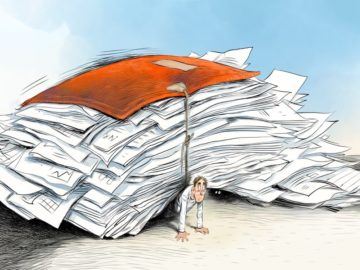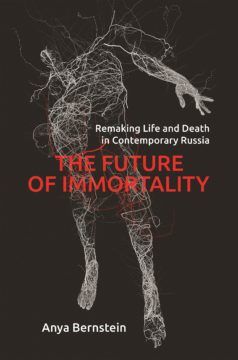I keep lighting candles on my stoop and watching the wind snuff them out
I keep thinking about Breonna Taylor asleep/ between fresh sheets/ I keep thinking/ about her skin cooling after a shower/ about her hair wrapped in a satin bonnet/ I think about what she may have dreamed that night/ keep thinking about her bedroom/ whether she had painted it recently/ argued with her partner about the undertones in that paint/ this one more blue/ this one more pink/ that she may have felt more at home now that she had chosen the color on her walls/ I keep thinking about how she could use her hands to keep blood moving through a human heart/ how she could use her hands to stanch the flow of blood until platelets arrived/ I wonder how many times she heard/ thank you for saving/ please save/ I wonder how many nights she could/ I keep thinking about her when I lie in bed at night/ when I wake up and look in the mirror/ when I walk to my front door/ I keep thinking about the life she wanted to build/ whether she had her eye on a ring and was dropping hints to the man who chose to protect her/ whether he was working on it/ whether it was in his sock drawer already as he waited for the right time/ I keep wondering why a black woman’s death alone can’t begin the revolution/ whether the sweet smoke rising to the heavens across this nation is offering enough/
by Amy M. Alvarez
from Split This Rock

 Covid has caused a deep crisis in the already suffering developing world, which contains nearly half of all humanity. And this will have serious implications for the future of the world economy and political order. Initially, Covid was something of a rich country’s disease. It started in industrial China and spread to places like the United States, Italy and the United Kingdom. But now none of the wealthiest countries falls within the top 10 worst-hit countries in terms of Covid deaths per capita. In the US, Covid has gone from the leading cause of death to seventh place in just over a year.
Covid has caused a deep crisis in the already suffering developing world, which contains nearly half of all humanity. And this will have serious implications for the future of the world economy and political order. Initially, Covid was something of a rich country’s disease. It started in industrial China and spread to places like the United States, Italy and the United Kingdom. But now none of the wealthiest countries falls within the top 10 worst-hit countries in terms of Covid deaths per capita. In the US, Covid has gone from the leading cause of death to seventh place in just over a year. Research articles in the life sciences are more ambitious than ever. The amount of data in high-impact journals has doubled over 20 years
Research articles in the life sciences are more ambitious than ever. The amount of data in high-impact journals has doubled over 20 years September 14, 2021, marked the 700th anniversary of the death of Dante Alighieri, the Florentine author of the world’s most renowned and masterful of all poems, The Divine Comedy. Not only did this poem have a marked impact on European vernacular languages in its notable departure from Latin, it also transformed how we understand the relationships among perpetrators, victims, and witnesses of violence. But more than this: it is perhaps with Dante that we really began to imagine what Hell looked like, which in turn demanded a revolution in how we understood the wretchedness of life, the fate of the sinful, and the path out through an all too earthly call to love and poetry.
September 14, 2021, marked the 700th anniversary of the death of Dante Alighieri, the Florentine author of the world’s most renowned and masterful of all poems, The Divine Comedy. Not only did this poem have a marked impact on European vernacular languages in its notable departure from Latin, it also transformed how we understand the relationships among perpetrators, victims, and witnesses of violence. But more than this: it is perhaps with Dante that we really began to imagine what Hell looked like, which in turn demanded a revolution in how we understood the wretchedness of life, the fate of the sinful, and the path out through an all too earthly call to love and poetry. How human beings behave is, for fairly evident reasons, a topic of intense interest to human beings. And yet, not only is there much we don’t understand about human behavior, different academic disciplines seem to have developed completely incompatible models to try to explain it. And as today’s guest Herb Gintis complains, they don’t put nearly enough effort into talking to each other to try to reconcile their views. So that what he’s here to do. Using game theory and a model of rational behavior — with an expanded notion of “rationality” that includes social as well as personally selfish interests — he thinks that we can come to an understanding that includes ideas from biology, economics, psychology, and sociology, to more accurately account for how people actually behave.
How human beings behave is, for fairly evident reasons, a topic of intense interest to human beings. And yet, not only is there much we don’t understand about human behavior, different academic disciplines seem to have developed completely incompatible models to try to explain it. And as today’s guest Herb Gintis complains, they don’t put nearly enough effort into talking to each other to try to reconcile their views. So that what he’s here to do. Using game theory and a model of rational behavior — with an expanded notion of “rationality” that includes social as well as personally selfish interests — he thinks that we can come to an understanding that includes ideas from biology, economics, psychology, and sociology, to more accurately account for how people actually behave. Claude Lévi-Strauss (1908–2009) was the foremost anthropologist of the twentieth century, and one of its most renowned intellectuals of any persuasion. Common readers, if they know him at all, tend to do so only by Tristes Tropiques (French for “Sad Tropics”), his 1955 memoir of his fieldwork among Brazilian tribes and his travels as an academic junketeer in other alien enclaves. That book is salted with animadversions on the spread of the “monoculture” of the West doing its worst to refashion the world in its unhandsome image.
Claude Lévi-Strauss (1908–2009) was the foremost anthropologist of the twentieth century, and one of its most renowned intellectuals of any persuasion. Common readers, if they know him at all, tend to do so only by Tristes Tropiques (French for “Sad Tropics”), his 1955 memoir of his fieldwork among Brazilian tribes and his travels as an academic junketeer in other alien enclaves. That book is salted with animadversions on the spread of the “monoculture” of the West doing its worst to refashion the world in its unhandsome image. The day I was diagnosed with cancer—serious cancer, out-of-the-blue cancer—I reeled out of the doctor’s office and onto the familiar street. My children’s dentist was on that block, and the Rite Aid where we got cheap toys after their checkups. Just an hour and a half earlier, I’d walked down that street and my world had been safe and whole—my two little boys, my good husband, my career as a writer just beginning to unfold. My life! I hadn’t even known to give it a backward glance.
The day I was diagnosed with cancer—serious cancer, out-of-the-blue cancer—I reeled out of the doctor’s office and onto the familiar street. My children’s dentist was on that block, and the Rite Aid where we got cheap toys after their checkups. Just an hour and a half earlier, I’d walked down that street and my world had been safe and whole—my two little boys, my good husband, my career as a writer just beginning to unfold. My life! I hadn’t even known to give it a backward glance. In 1789, newly elected president
In 1789, newly elected president  “Climate change may be too wild a stream to be navigated in the accustomed barques of narration, yet we have entered a time in human history when the wild has become the norm,” writes Amitav Ghosh in his book The Great Derangement, and part of the reason Anna and I chose more lyric modes of documentation for this project was the impossibility of a linear narrative, of straightforward representation. How could we present something that’s long-term and large-scale dramatic, but harder to see in smaller daily moments, and almost impossible to photograph: raised roads in Miami Beach leaving sidewalks and storefronts below grade, or giant pumps that move water from the streets back into the Bay that simply look like large metal boxes? What language should we use to describe the paradox of a city in a time of sea-level rise, lying just feet above sea level, that’s also built on porous limestone—where rampant development means that multimillion-dollar waterfront houses and condominiums are still going up all along the shoreline?
“Climate change may be too wild a stream to be navigated in the accustomed barques of narration, yet we have entered a time in human history when the wild has become the norm,” writes Amitav Ghosh in his book The Great Derangement, and part of the reason Anna and I chose more lyric modes of documentation for this project was the impossibility of a linear narrative, of straightforward representation. How could we present something that’s long-term and large-scale dramatic, but harder to see in smaller daily moments, and almost impossible to photograph: raised roads in Miami Beach leaving sidewalks and storefronts below grade, or giant pumps that move water from the streets back into the Bay that simply look like large metal boxes? What language should we use to describe the paradox of a city in a time of sea-level rise, lying just feet above sea level, that’s also built on porous limestone—where rampant development means that multimillion-dollar waterfront houses and condominiums are still going up all along the shoreline? That something can be existent without properly existing, caught halfway between being and nonbeing, or between life and death, is a concept much larger than Williams’s straightforward claims about the eradication of the Everglades. The notion of a foundational in-between-ness, of existence itself as a fleeting or fugacious form, has been central to her work from the very beginning. The writer Vincent Scarpa, who has studied and taught Williams’s work extensively, put it to me this way: “That liminal state between being alive and being dead—that’s Joy’s playground.” He reminded me that nursing homes, “these collectives where it goes unacknowledged or otherwise refused that the living are only playing at living,” feature frequently in her work. “But we’re really all in that liminal state, just to varying degrees.” Sure enough, a nursing home is a central setting of Williams’s novel The Quick and the Dead (2000), which also features a petulant ghost. Expand the category a bit and you’ll find hospitals and hotels along with rest homes. Her 1988 novel, Breaking and Entering, is about a pair of drifters who squat Florida vacation homes. Florida itself is sometimes known as “God’s Waiting Room.”
That something can be existent without properly existing, caught halfway between being and nonbeing, or between life and death, is a concept much larger than Williams’s straightforward claims about the eradication of the Everglades. The notion of a foundational in-between-ness, of existence itself as a fleeting or fugacious form, has been central to her work from the very beginning. The writer Vincent Scarpa, who has studied and taught Williams’s work extensively, put it to me this way: “That liminal state between being alive and being dead—that’s Joy’s playground.” He reminded me that nursing homes, “these collectives where it goes unacknowledged or otherwise refused that the living are only playing at living,” feature frequently in her work. “But we’re really all in that liminal state, just to varying degrees.” Sure enough, a nursing home is a central setting of Williams’s novel The Quick and the Dead (2000), which also features a petulant ghost. Expand the category a bit and you’ll find hospitals and hotels along with rest homes. Her 1988 novel, Breaking and Entering, is about a pair of drifters who squat Florida vacation homes. Florida itself is sometimes known as “God’s Waiting Room.” Half a decade on, “Brexit and Trump” remain shorthand for the rise of right-wing populism and a profound unsettling of liberal democracies. One curious fact is rarely mentioned: the campaigns of Hillary Clinton and Remain in 2016 had similar-sounding slogans, which spectacularly failed to resonate with large parts of the electorate: “Stronger Together” and “Stronger in Europe”. Evidently, a significant number of citizens felt that they might actually be stronger, or in some other sense better off, by separating. What does that tell us about the fault lines of politics today?
Half a decade on, “Brexit and Trump” remain shorthand for the rise of right-wing populism and a profound unsettling of liberal democracies. One curious fact is rarely mentioned: the campaigns of Hillary Clinton and Remain in 2016 had similar-sounding slogans, which spectacularly failed to resonate with large parts of the electorate: “Stronger Together” and “Stronger in Europe”. Evidently, a significant number of citizens felt that they might actually be stronger, or in some other sense better off, by separating. What does that tell us about the fault lines of politics today? Our mushy brains seem a far cry from the solid silicon chips in computer processors, but scientists have a long history of comparing the two. As Alan Turing
Our mushy brains seem a far cry from the solid silicon chips in computer processors, but scientists have a long history of comparing the two. As Alan Turing  A little over half a century ago, in 1970, my mother’s parents took her to Kabul to shop for her wedding. From Lahore, Kabul was only a short flight or a long drive away, much closer than Karachi. It was the first time my mother had left Pakistan.
A little over half a century ago, in 1970, my mother’s parents took her to Kabul to shop for her wedding. From Lahore, Kabul was only a short flight or a long drive away, much closer than Karachi. It was the first time my mother had left Pakistan. A
A The title of this book is a surprise. Chesterton’s admirers have regarded him as a saintly figure; indeed he has been proposed for canonisation. Even those, like Bernard Shaw and H G Wells, who engaged in fierce argument with him regarded him with affection. He was a master of paradox whose sincerity was nevertheless rarely questioned. Orwell’s complaint that everything Chesterton wrote was intended to demonstrate the superiority of the Catholic Church was nonsense, and not only because he didn’t convert until 1922, when he was forty-eight, by which time he had, as Richard Ingrams observes, written his best books. It would be truer, though still an exaggeration, to say that everything he wrote was intended to demonstrate the good sense of the ordinary man. He might well, like a certain Tory politician today, have said we have had enough of experts.
The title of this book is a surprise. Chesterton’s admirers have regarded him as a saintly figure; indeed he has been proposed for canonisation. Even those, like Bernard Shaw and H G Wells, who engaged in fierce argument with him regarded him with affection. He was a master of paradox whose sincerity was nevertheless rarely questioned. Orwell’s complaint that everything Chesterton wrote was intended to demonstrate the superiority of the Catholic Church was nonsense, and not only because he didn’t convert until 1922, when he was forty-eight, by which time he had, as Richard Ingrams observes, written his best books. It would be truer, though still an exaggeration, to say that everything he wrote was intended to demonstrate the good sense of the ordinary man. He might well, like a certain Tory politician today, have said we have had enough of experts.